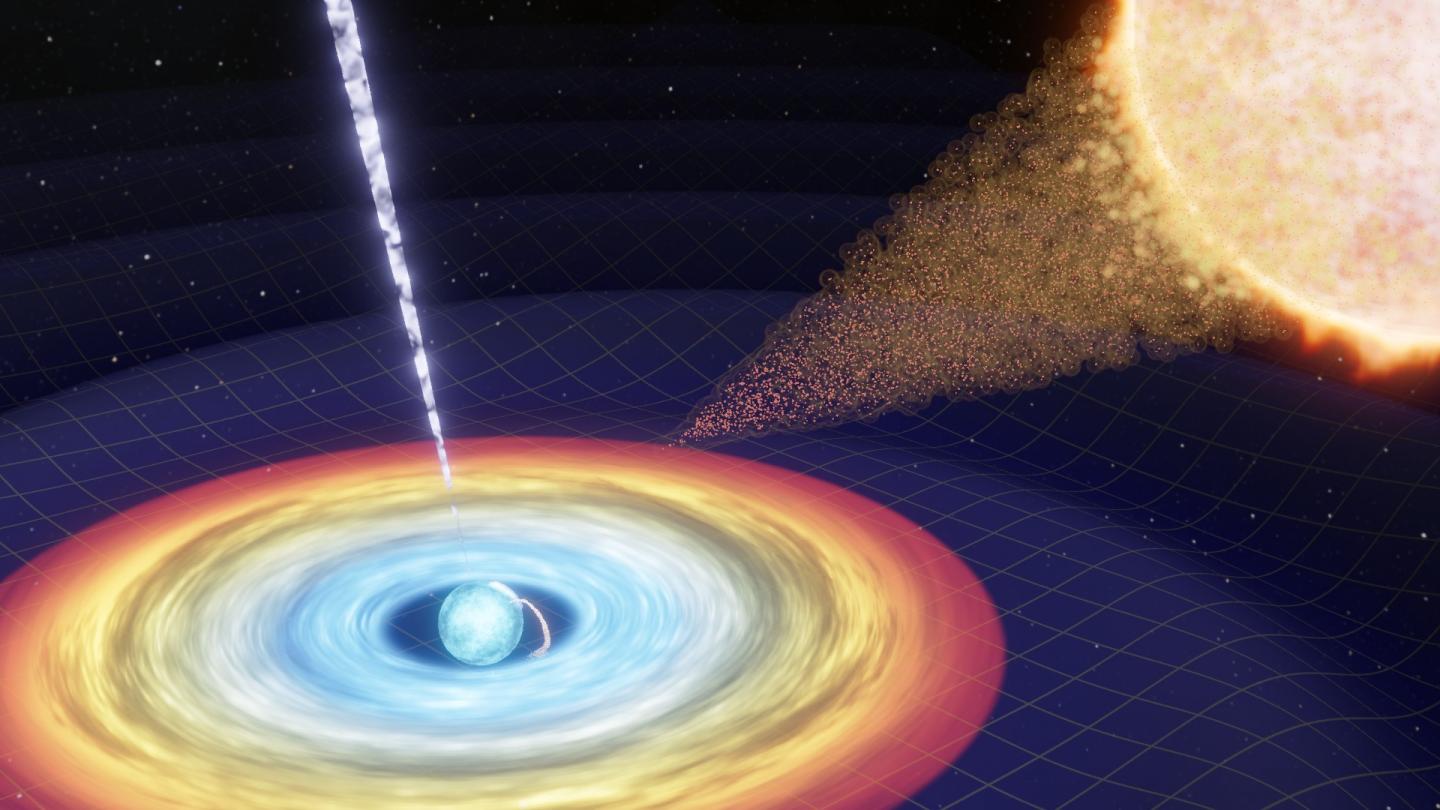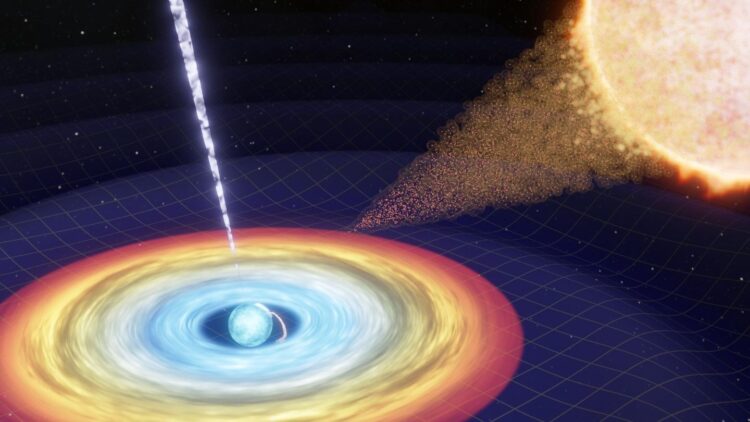Scientists refine the search for enigmatic continuous grav waves

Credit: Mark Myers, OzGrav/ Swinburne University
The hunt for the never before heard “hum” of gravitational waves caused by mysterious neutron stars has just got a lot easier, thanks to an international team of researchers.
Gravitational waves have only been detected from black holes and neutron stars colliding, major cosmic events that cause huge bursts that ripple through space and time.
The research team, involving scientists from the LIGO Scientific Collaboration (LSC), Virgo Collaboration and the Centre for Gravitational Astrophysics (CGA) at The Australian National University (ANU), are now turning their eagle eye to spinning neutron stars to detect the waves.
Unlike the massive bursts caused by black holes or neutron stars colliding, the researchers say single spinning neutron stars have a bulge or “mountain” only a few millimetres high, which may produce a steady constant stream or “hum” of gravitational waves.
The researchers are using their methods that detected gravitational waves for the first time in 2015 to capture this steady soundtrack of the stars over the thunderous noise of massive black holes and dense neutron stars colliding.
They say it’s like trying to capture the squeak of a mouse in the middle of a stampeding herd of elephants.
If successful, it would be the first detection of a gravitational wave event that didn’t involve the collision of massive objects like black holes or neutron stars.
ANU Distinguished Professor, Susan Scott from the ANU Research School of Physics, said the collision of dense neutron stars sent a “burst” of gravitational waves rippling through the Universe.
“Neutron stars are mystery objects,” Professor Scott, also a Chief Investigator with the ARC Centre of Excellence for Gravitational Wave Discovery (OzGrav), said.
“We don’t really understand what they are made up of, or how many types of them exist. But what we do know is that when they collide, they send incredible bursts of gravitational waves across the Universe.
“In contrast, the gentle hum of a spinning neutron star is very faint and almost impossible to detect.”
Three new papers have just been published by the LSC and Virgo collaborations detailing the most sensitive searches to date for the faint hum of gravitational waves from spinning neutron stars.
Their work offers a “map to the potential El Dorado of gravitational waves.”
“One of our searches targets young supernova remnants. These neutron stars, recently born, are more deformed, and should emit a stronger stream of gravitational waves,” Dr Lilli Sun, from CGA and an Associate Investigator with OzGrav, said.
As these searches become more and more sensitive they are providing more detail than ever of the possible shape and make-up of neutron stars.
“If we can manage to detect this hum, we’ll be able to look deep into the heart of a neutron star and unlock its secrets,” Dr Karl Wette, a postdoctoral researcher with OzGrav and the CGA, said.
Professor Scott, who is also the leader of the General Relativity Theory and Data Analysis Group at ANU, added: “Neutron stars represent the densest form of matter in the Universe before a black hole will form.”
“Searching for their gravitational waves allows us to probe nuclear matter states that simply can’t be produced in laboratories on Earth.”
###
FOR INTERVIEW:
Distinguished Professor Susan Scott
Research School of Physics
ANU College of Science
M: +61 450 522 939
E: [email protected]
Dr Karl Wette
Research School of Physics
ANU College of Science
M: +61 449 037 563
E: [email protected]
Dr Lilli Sun
Research School of Physics
ANU College of Science
M: +61 490 399 229
E: [email protected]
Media Contact
James Giggacher
[email protected]





